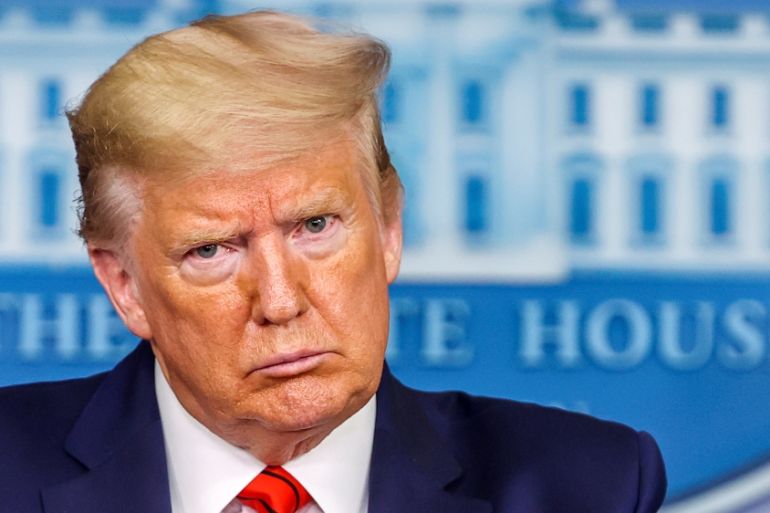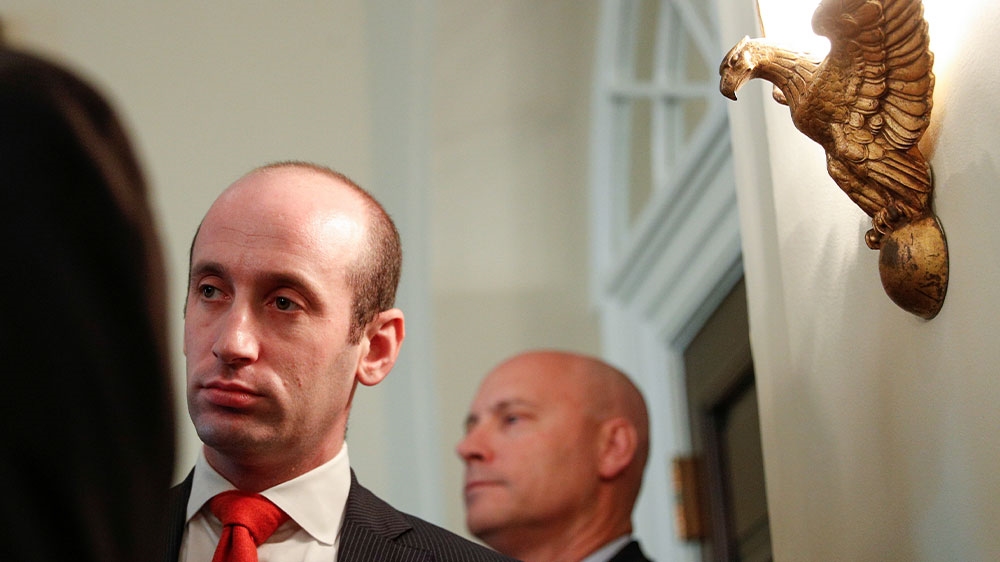Trump’s immigration executive order: What you need to know
Trump says the order is meant to ‘protect’ workers amid the coronavirus pandemic, but many exemptions apply.

President Donald Trump issued an executive order on Wednesday that temporarily blocks some individuals outside the United States from obtaining US permanent residency, a move he said would protect American workers amid the economic fallout from the coronavirus outbreak.
The executive order included a number of exemptions and was not a full suspension of legal immigration, as suggested by a Trump tweet late on Monday night.
Keep reading
list of 3 itemsMexico: 14 migrants get COVID-19 after US deports man with virus
Guatemala: Many migrants on US deportation flight had coronavirus
Questions remain about the extent of the executive order and whether or not the measures therein fall within the power of the president.
Here is what Trump’s order does and does not do.
Who will be affected?
The order blocks some individuals outside the US from settling permanently by obtaining what is informally known as a “green card”.
The measure applies to requests for permanent residence based on employment in the US and requests based on familial ties but contains several exceptions.

The order does not affect people coming to the US on non-immigrant visas, including tourists and business travellers. It also does not affect workers such as farm labourers entering the United States on temporary visas or skilled workers on H-1B visas.
Foreigners already in the US and seeking to adjust their status will not be blocked by the latest measure.
The majority of employment-based green cards are granted to people inside the United States, and thereby not covered by the ban. Most family-based green cards are granted to people outside the country, however.
The immediate impact of the order was not clear since most US consulates around the world have already shuttered most immigration processing services.
Who is exempt? How long will it last?
Doctors, nurses and other healthcare professionals will be exempt, as will other prospective immigrants coming to the country to perform “essential” work to combat the new coronavirus, as determined by federal agencies.

The measure also excludes immigrants applying for the EB-5 visa programme, which allows foreigners willing to invest large sums of money in US projects that create or preserve jobs to obtain permanent residence.
The order makes an exception for spouses of US citizens and their unmarried children under the age of 21.
The measure contains several other exemptions, including a general exemption for “any alien whose entry would be in the national interest”.
The suspension will begin just before midnight on Thursday and last 60 days. After that, Trump will review US economic conditions and decide whether it should be extended. Future extensions could potentially be longer than 60 days, Trump said this week.
What happens to foreign temporary workers?
The executive order states that the administration will review all temporary visa programmes – including guest worker programmes – to determine if additional steps should be taken to protect US workers.
A senior administration official told Reuters news agency this week that the White House was considering a separate action that could deal with skilled workers who enter the country on H-1B visas and others affected by US immigration policy.
Does Trump have the power to suspend immigration?
Trump’s latest immigration order draws on the same legal authority his administration cited in its 2017 travel ban that suspended the entry of travellers and immigrants from several majority-Muslim nations. While that policy cited security concerns, critics dubbed it a “Muslim ban“.
Federal judges blocked several iterations of the ban from taking effect, but the Supreme Court eventually upheld a reworked version of the measure in 2018 and it continues to be in force and was expanded in January.
Some legal experts argue the high court’s ruling does not permit a broad, worldwide ban on immigration into the United States and expect Trump’s latest order to be challenged in court.
How does migration look now?
The US suspended routine visa services in most countries worldwide in mid-March due to the coronavirus outbreak, which was expected to dramatically slow immigration.
|
|
Many other countries around the world have closed their borders and enacted quarantines to limit the spread of the virus, greatly reducing travel worldwide.
Amid the global slowdown, the number of permanent residency visas issued by the State Department fell to around 24,000 in March, a 35 percent decrease from the previous month, according to department statistics published on Thursday.
The number of temporary visas issued also decreased by roughly a third.
Will blocking immigrants help the economy?
Trump said on Tuesday that an immigration suspension would protect US workers, an extension of the message he employed during his 2016 presidential campaign.
However, researchers generally agree that immigration into the US has actually stimulated economic growth, increased the size of the economy and created jobs, according to Giovanni Peri, an economics professor at the University of California, Davis.
“The idea that immigration threatens American jobs is just not there in any data,” he told Reuters news agency.